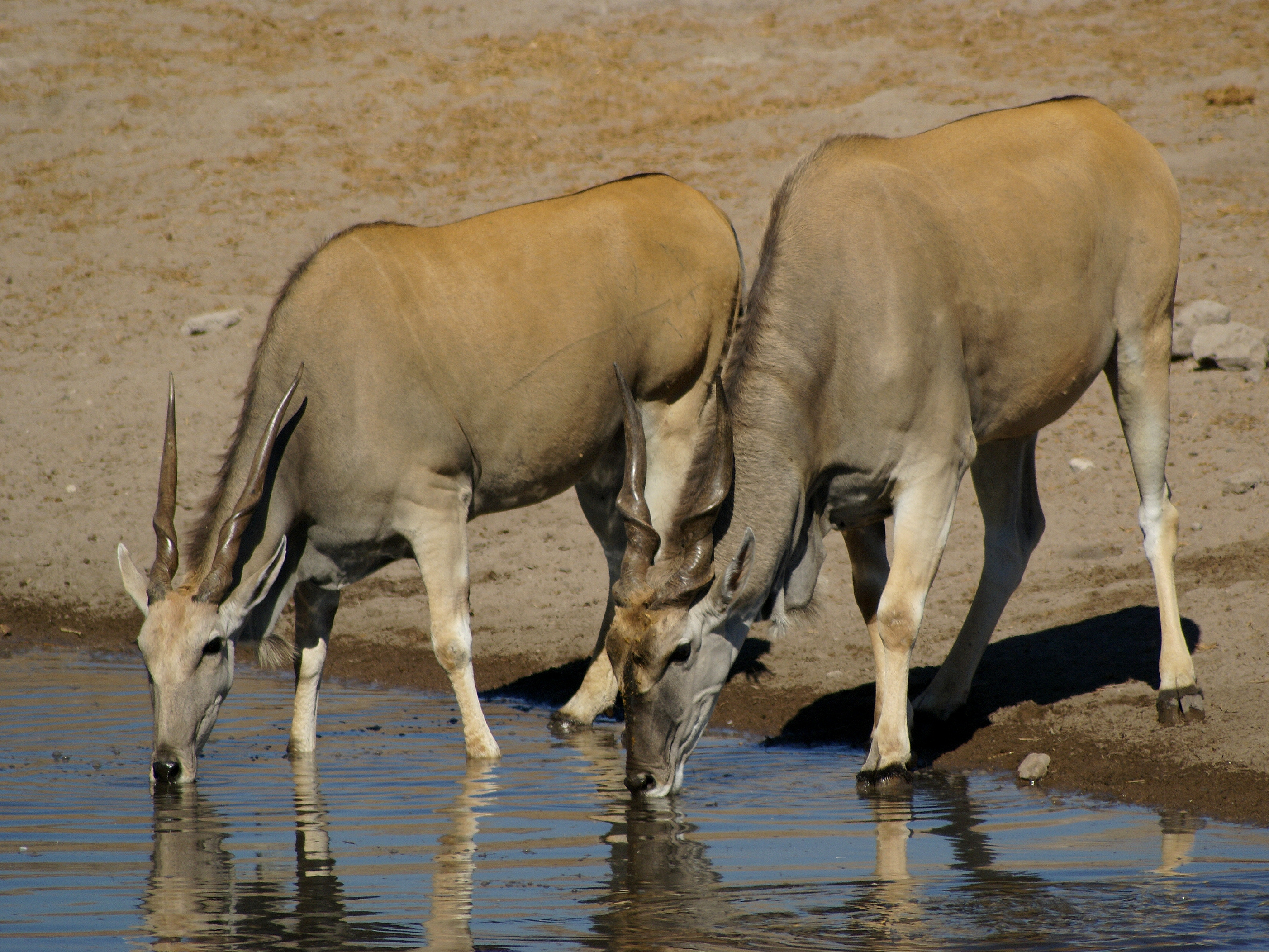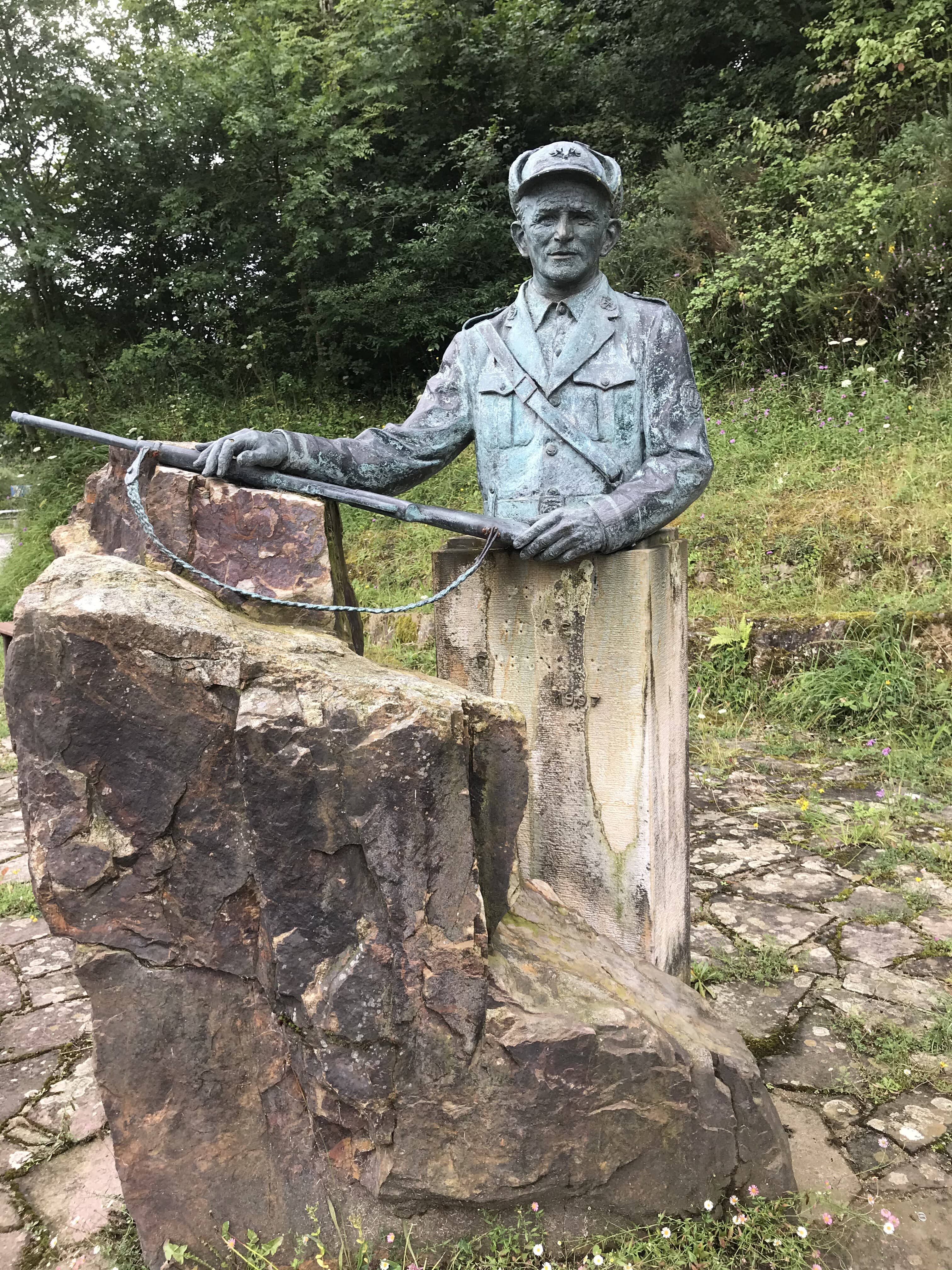|
Central African Rabbit
The Bunyoro rabbit or Uganda grass hare (''Poelagus marjorita'') is a species of mammal in the family Leporidae. It is the only member of the genus ''Poelagus''. It is a medium-sized ( long), greyish-brown furred, nocturnal, plant-eating rabbit found in central Africa. Its typical habitat is damp savannah, often with rocky outcrops, but it also appears in forests and in rocky areas alongside rock hyraxes. First described by British mammalogist Jane St. Leger in 1929 as a member of the hares, the Bunyoro rabbit was placed within its own genus in 1932 after specimens were examined in detail with relation to other leporids. Two subspecies from what is now South Sudan were described in the following decades, but neither is recognized today. The Bunyoro rabbit's genetic relationships have been variously described; most place it as closely related to the red rock hares (''Pronolagus'') and the striped rabbits (''Nesolagus''), but at least one study describes it as a sister group ... [...More Info...] [...Related Items...] OR: [Wikipedia] [Google] [Baidu] |
Species
A species () is often defined as the largest group of organisms in which any two individuals of the appropriate sexes or mating types can produce fertile offspring, typically by sexual reproduction. It is the basic unit of Taxonomy (biology), classification and a taxonomic rank of an organism, as well as a unit of biodiversity. Other ways of defining species include their karyotype, DNA sequence, morphology (biology), morphology, behaviour, or ecological niche. In addition, palaeontologists use the concept of the chronospecies since fossil reproduction cannot be examined. The most recent rigorous estimate for the total number of species of eukaryotes is between 8 and 8.7 million. About 14% of these had been described by 2011. All species (except viruses) are given a binomial nomenclature, two-part name, a "binomen". The first part of a binomen is the name of a genus to which the species belongs. The second part is called the specific name (zoology), specific name or the specific ... [...More Info...] [...Related Items...] OR: [Wikipedia] [Google] [Baidu] |
Least-concern Species
A least-concern species is a species that has been evaluated and categorized by the International Union for Conservation of Nature (IUCN) as not being a focus of wildlife conservation because the specific species is still plentiful in the wild. They do not qualify as threatened, near threatened, or (before 2001) conservation dependent. Species cannot be assigned the "Least Concern" category unless they have had their population status evaluated. That is, adequate information is needed to make a direct, or indirect, assessment of its risk of extinction based on its distribution or population status. Evaluation Since 2001 the category has had the abbreviation "LC", following the IUCN 2001 Categories & Criteria (version 3.1). Before 2001 "least concern" was a subcategory of the " Lower Risk" category and assigned the code "LR/lc" or lc. Around 20% of least concern taxa (3261 of 15,636) in the IUCN database still use the code "LR/lc", which indicates they have not been re- ... [...More Info...] [...Related Items...] OR: [Wikipedia] [Google] [Baidu] |
Caprolagus
The hispid hare (''Caprolagus hispidus''), also known as the Assam rabbit and bristly rabbit, is a species of rabbit native to South Asia. It is the only species in the genus ''Caprolagus''. Named for its bristly fur coat, the hispid hare is a rabbit with dark-brown fur and a large nose. It has small ears compared to the Indian hare, a lagomorph that occurs in the same regions as the hispid hare. Once thought to be extinct, the hispid hare was rediscovered in Assam in 1971 and has been found in isolated populations across India, Nepal, and Bangladesh. Its historic range extended along the southern foothills of the Himalayas, and a related fossil in the genus ''Caprolagus'' has been found as far away as Indonesia. Today, the species' habitat is much smaller and is highly fragmented. The region it occupies is estimated to be less than , extending over an area of . Populations experienced a continuing decline due to loss of suitable habitat via increasing agriculture, flood con ... [...More Info...] [...Related Items...] OR: [Wikipedia] [Google] [Baidu] |
Masindi
Masindi is a town in the Western Region, Uganda, Western Region of Uganda. It is on the road between Kampala and the Murchison Falls National Park. It is the site of the headquarters of the Masindi District. Location Masindi is approximately northwest of Kampala, Uganda's capital and largest city, on an all-weather Asphalt concrete, tarmac highway. This location is approximately north-east of Hoima, the largest city in the Bunyoro sub-region. The coordinates of Masindi are 1°41'01.0"N, 31°43'20.0"E (Latitude:1.683611; Longitude:31.722222). Masindi Town lies at an average elevation of above sea level. Population According to the 2002 national census, the population of Masindi was about 28,300. In 2010, the Uganda Bureau of Statistics (UBOS) estimated the population at 43,000. In 2011, UBOS estimated the mid-year population at 45,400. The national population census conducted in August 2014 put the population at 94,622. In 2020, UBOS estimated the mid-year population of Masi ... [...More Info...] [...Related Items...] OR: [Wikipedia] [Google] [Baidu] |
Type Locality (biology)
In biology, a type is a particular wikt:en:specimen, specimen (or in some cases a group of specimens) of an organism to which the scientific name of that organism is formally associated. In other words, a type is an example that serves to anchor or centralizes the defining features of that particular taxon. In older usage (pre-1900 in botany), a type was a taxon rather than a specimen. A taxon is a scientifically named grouping of organisms with other like organisms, a set (mathematics), set that includes some organisms and excludes others, based on a detailed published description (for example a species description) and on the provision of type material, which is usually available to scientists for examination in a major museum research collection, or similar institution. Type specimen According to a precise set of rules laid down in the International Code of Zoological Nomenclature (ICZN) and the ''International Code of Nomenclature for algae, fungi, and plants'' (ICN), the ... [...More Info...] [...Related Items...] OR: [Wikipedia] [Google] [Baidu] |
Game Warden
A conservation officer is a law enforcement officer who protects wildlife and the environment. A conservation officer may also be referred to as an environmental technician/technologist, game warden, park ranger, forest watcher, forest guard, forest warden, forester, gamekeeper, investigator, wilderness officer, wildlife officer, or wildlife trooper. History Conservation officers can be traced back to the Middle Ages (see gamekeeper). Conservation law enforcement goes back to King Canute who enacted a forest law that made unauthorized hunting punishable by death. In 1861, Archdeacon Charles Thorp arranged purchase of some of the Farne Islands off the north-east coast of England and employment of a warden to protect threatened seabird species. The modern history of the office is linked to that of the conservation movement and has varied greatly across the world. History in New York State Conservation officers in New York State are known as "environmental conservat ... [...More Info...] [...Related Items...] OR: [Wikipedia] [Google] [Baidu] |
Charles Pitman (game Warden)
Charles Robert Senhouse Pitman, DSO, MC (19 March 1890 – 18 September 1975) was a noted herpetologist, conservationist and friend of Joy Adamson. Early life Charles Pitman was born in Bombay and educated at the Royal Naval School, Eltham, at Blundell's School in Tiverton, and at Royal Military Academy Sandhurst, which he left in 1909 having obtained a commission in the Indian Army. Military career After a brief initial posting, Pitman joined the 27th Punjabis with which he stayed from 1910 to 1921 when he retired from the army to take up farming in Kenya. During his army career, which spanned the First World War, Pitman fought in Mesopotamia (where he was awarded the DSO and MC), and also in Egypt and France. Life in Africa In 1924 Pitman was offered the position of Game Warden of the Uganda Protectorate. After his marriage to Marjorie Fielding Duncan, he assumed this post which he held from 1925 to 1951, interrupted only by three years (1931–1933) spent in Northern ... [...More Info...] [...Related Items...] OR: [Wikipedia] [Google] [Baidu] |
Protectorate Of Uganda
The Protectorate of Uganda was a protectorate of the British Empire from 1894 to 1962. In 1893 the Imperial British East Africa Company transferred its administration rights of territory consisting mainly of the Kingdom of Buganda to the British government. In 1894 the Uganda Protectorate was established, and the territory was extended beyond the borders of Buganda to an area that roughly corresponds to that of present-day Uganda. History Background In the mid-1880s, the Kingdom of Buganda was divided between four religious factions – Adherents of Uganda's Native Religion, Catholics, Protestants and Muslims – each vying for political control.Griffiths, Tudor. "Bishop Alfred Tucker and the Establishment of a British Protectorate in Uganda 1890–94." Journal of Religion in Africa, vol. 31, no. 1, 2001, pp. 92–114. JSTOR, www.jstor.org/stable/1581815. In 1888, Mwanga II was ousted in a coup led by the Muslim faction, who installed Kalema as leader. The following y ... [...More Info...] [...Related Items...] OR: [Wikipedia] [Google] [Baidu] |
British Museum
The British Museum is a Museum, public museum dedicated to human history, art and culture located in the Bloomsbury area of London. Its permanent collection of eight million works is the largest in the world. It documents the story of human culture from its beginnings to the present.Among the national museums in London, sculpture and decorative art, decorative and applied art are in the Victoria and Albert Museum; the British Museum houses earlier art, non-Western art, prints and drawings. The National Gallery holds the national collection of Western European art to about 1900, while art of the 20th century on is at Tate Modern. Tate Britain holds British Art from 1500 onwards. Books, manuscripts and many works on paper are in the British Library. There are significant overlaps between the coverage of the various collections. Established in 1753, the British Museum was the first public national museum. In 2023, the museum received 5,820,860 visitors, 42% more than the previous y ... [...More Info...] [...Related Items...] OR: [Wikipedia] [Google] [Baidu] |
Emin Pasha
Mehmed Emin Pasha (born Isaak Eduard Schnitzer, baptized Eduard Carl Oscar Theodor Schnitzer; March 28, 1840 – October 23, 1892) was an Ottoman physician of German Jewish origin, naturalist, and governor of the Egyptian province of Equatoria on the upper Nile. The Ottoman Empire conferred the title "Pasha" on him in 1886, and thereafter he was referred to as "Emin Pasha". Life and career Emin was born in Oppeln (in present-day Poland), Silesia, into a middle-class German Jewish family, who moved to Neisse when he was two years old. After the death of his father in 1845, his mother married a Christian; she and her children were baptized Lutherans. He was a student at the Kolegium Carolinum Neisse in Nysa, Poland, at the universities at Breslau, Königsberg, and Berlin, qualifying as a physician in 1864. However, he was disqualified from practice, and left Germany for Constantinople, with the intention of entering Ottoman service. Travelling via Vienna and Trieste, he st ... [...More Info...] [...Related Items...] OR: [Wikipedia] [Google] [Baidu] |
European Rabbit
The European rabbit (''Oryctolagus cuniculus'') or coney is a species of rabbit native to the Iberian Peninsula (Spain, Portugal and Andorra) and southwestern France. It is the only extant species in the genus ''Oryctolagus''. The European rabbit has faced a population decline in its native range due to myxomatosis, rabbit haemorrhagic disease, overhunting and habitat loss. Outside of its native range, it is known as an invasive species, as it has been introduced to countries on all continents with the exception of Antarctica, often with devastating effects on local biodiversity due to a lack of predators. The average adult European rabbit is in length, and can weigh , though size and weight vary with habitat and diet. Its distinctive ears can measure up to from the Occipital bone, occiput. Due to the European rabbit's history of domestication, selective breeding, and introduction to non-native habitats, feral European rabbits across the world display a wide variety of Morpho ... [...More Info...] [...Related Items...] OR: [Wikipedia] [Google] [Baidu] |
Geoffrey Douglas Hale Carpenter
G.D. Hale Carpenter MBE (26 October 1882 in Eton, Berkshire – 30 January 1953 in Oxford) was a British entomologist and medical doctor. He worked first at the London School of Hygiene and Tropical Medicine, and in Uganda, on tse-tse flies and sleeping sickness. His main work in zoology was on mimicry in butterflies, an interest he developed in Uganda and Tanganyika. He succeeded E.B. Poulton as Hope Professor of Zoology at Oxford University from 1933 to 1948. Biography Douglas was a son of Philip Herbert Carpenter DSc FRS, a schoolmaster at Eton College; a grandson of the naturalist and physiologist William Benjamin Carpenter; and a great-grandson of Lant Carpenter, a Unitarian minister. Carpenter attended St Catherine's College, Oxford, graduating in 1904. He studied medicine at St George's Hospital, London, graduating as a Bachelor of Medicine, Bachelor of Surgery (the standard combined medical degree at the University of London at that time) in 1908. He then join ... [...More Info...] [...Related Items...] OR: [Wikipedia] [Google] [Baidu] |








